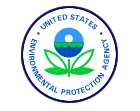
|
EPA 540/R-97/506
Geotech, Inc.
Cold Top Ex-Situ Virtification System
Innovative Technology Evaluation Report
This document is available in the Adobe Acrobat PDF
Format.
Click here for information
about Portable Document File (PDF) Formats.
or
Click here
to directly download the Acrobat Reader.
(To view the PDF, it is recommended that you
use the latest version of Acrobat Reader.)
EPA 540/R-97/506 Geotech, Inc. - Cold Top Ex-Situ
Virtification System - December 1999
(283K)
EPA 540/R-97/506 Geotech, Inc. - Cold Top Ex-Situ
Virtification System - Figures and Graphs B&W
EPA 540/R-97/506 Geotech, Inc. - Cold Top Ex-Situ
Virtification System - Figures and Graphs Color
Abstract
A Superfund Innovative Technology Evaluation (SITE) technology demonstration
was conducted in February and March 1997 to evaluate the potential applicability
and effectiveness of the Geotech Development Corporation (Geotech) Cold Top
ex-situ vitrification technology on chromium-contaminated soils. The demonstration
was conducted using the vitrification furnace at Geotech's pilot plant in Niagara
Falls, New York.
Chromium-contaminated soil from two state Superfund sites in the Jersey City,
New Jersey area was collected, crushed, sieved, dried, mixed with carbon and
sand, and shipped to the Geotech pilot plant. The SITE demonstration consisted
of one vitrification test run on soil from each site. During each test, solid
and gas samples were collected from various locations in the Cold Top system
and analyzed for several chemical and physical parameters. In addition, process
monitoring data were recorded. During the demonstration, the Cold Top system
treated about 10,000 pounds of soil contaminated with trivalent and hexavalent
chromium and other metals.
One primary and five secondary objectives were identified for the SITE demonstration.
The primary objective was to develop test data to evaluate whether waste and
product streams from the Cold Top vitrification system pilot plant were capable
of meeting the U.S. Environmental Protection Agency (EPA) Resource Conservation
and Recovery Act (RCRA) definitions of a nonhazardous waste, based on the stream's
leachable chromium content. Secondary objectives were to determine the following:
(1) partitioning of chromium and hexavalent chromium from the contaminated soil
into various waste and product streams; (2) the ability of the vitrified product
to meet New Jersey Department of Environmental Protection (NJDEP) criteria for
use as fill material (such as road construction aggregate); (3) the system's
ability to meet applicable compliance regulations for air emissions of dioxins,
furans, trace metals, particulates, and hydrogen chloride; (4) uncontrolled
air emissions of the oxides of nitrogen, sulfur dioxide, carbon monoxide, and
total hydrocarbons from the vitrification unit; and (5) projected operating
costs of the technology per ton of soil.
Observational demonstration results showed that the Cold Top system vitrified
chromium-contaminated soil from the two New Jersey sites, yielding a product
meeting RCRA toxicity characteristic leaching procedure (TCLP) standards. From
soil excavated at one of the New Jersey sites, the system yielded a potentially
recyclable metallic product referred to as "ferrofurnace bottoms" that also
met the RCRA TCLP chromium standard. Demonstration results also showed that
the chromium content of the vitrified products did not differ significantly
from that of the untreated soils, but that the baghouse dusts were higher in
chromium content than the untreated soils. Hexavalent chromium concentrations
in the untreated soil were generally not detected (reduced at least two to three
orders of magnitude) in the vitrified product and ferrofurnace bottoms. The
hexavalent chromium concentration in the baghouse dust was about the same as
that in the untreated soil.
Results of emissions modeling indicate that the concentration of metals in
stack emissions depend on soil characteristics, the APCS, and detection limits
of various analytes. Analysis of operating costs indicates that Cold Top treatment
of chromium-contaminated soil, similar to that treated during the SITE demonstration,
is estimated to cost from $83 to $213 per ton, depending on disposal costs and
potential credits for sale of the vitrified product.
The results of all sample analyses and quality assurance and quality control
data from the SITE demonstration were evaluated with respect to the project
objectives specified by the quality assurance project plan (QAPP). The conclusions
of the demonstration are being reported as observational, meaning that although
the authors feel the conclusions are supported, some data are not statistically
valid at the levels specified in the original data quality objectives.
Back to SITE Home Page
Posted November 23, 1999
|

